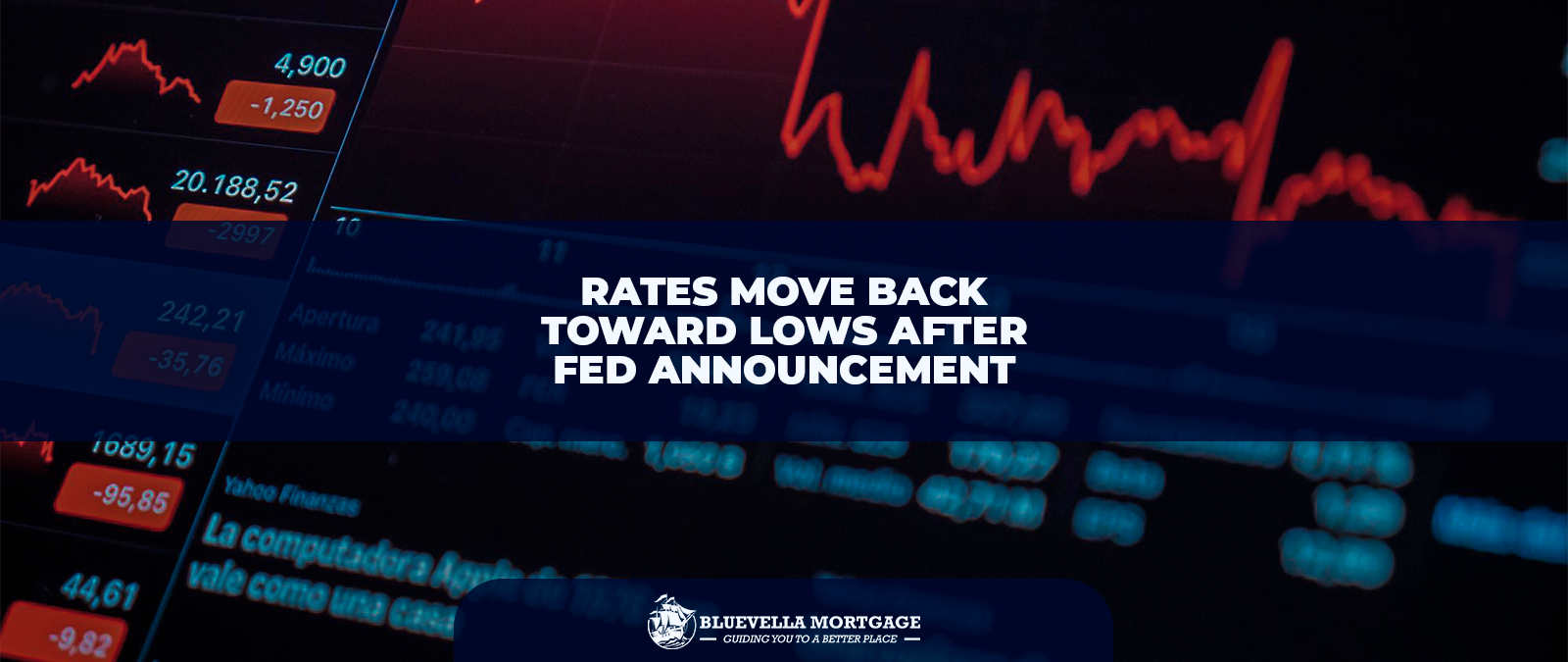Current State of Mortgage Rates
In recent weeks, mortgage rates have experienced a significant decline, reflecting the stabilization of financial markets. Current average rates for 30-year fixed mortgages have decreased to approximately 6.5%, while 15-year fixed rates hover around 5.8%. This decline has been welcomed by potential homebuyers and those looking to refinance, offering more affordable borrowing options. In comparison to historical averages, these rates remain elevated; however, they are a decrease from the highs observed earlier this year, where 30-year rates approached 7.5%.
The adjustable-rate mortgage (ARM) options have also seen a downward shift, with average rates for 5/1 ARMs falling to about 5.3%. This trend indicates a growing appetite for fixed-rate loans among buyers seeking predictability in their monthly payments in a fluctuating economic environment. Interestingly, the decline in rates can largely be attributed to the easing of inflation fears and the subsequent stabilization of treasury yields. Financial markets have reacted positively, impacting the overall mortgage landscape.
When analyzing these figures against historical data, it’s evident that recent weeks have marked a notable shift. For context, the average 30-year fixed mortgage rate has been notably lower over the last decade, with a historical low of under 3% reported during the pandemic. Thus, while the current rates reflect a decline, it’s crucial to recognize that they remain higher than the unprecedented lows witnessed in 2020 and 2021. Potential homeowners and investors should be aware of these dynamics as they decide on the timing of their mortgage applications, taking into account both current trends and their unique financial situations.
Also read: Mortgage Rates Extend Winning Streak as Familiar Pattern Returns
Factors Influencing Mortgage Rates
Mortgage rates are primarily influenced by a myriad of economic and financial factors that reflect the broader market conditions. One of the most significant aspects is inflation, which affects the purchasing power of consumers and the overall cost of borrowing. When inflation is high, lenders typically raise mortgage rates to compensate for the declining value of money over time. Conversely, a decline in inflation can lead to lower rates as the purchasing power stabilizes, encouraging home buying and investments.
Another critical factor is employment statistics, which provide insights into the health of the economy. As employment rates improve, consumer confidence often rises, leading to increased demand for homes. Consequently, a robust labor market can result in higher mortgage rates due to increased competition among buyers. On the other hand, a sluggish job market tends to dampen demand, often resulting in lower mortgage rates as lenders attempt to stimulate borrowing and ease the financial burdens on consumers.
The policies set forth by the Federal Reserve play a crucial role in determining mortgage rates as well. The Federal Reserve has the ability to influence short-term interest rates through its monetary policy. When the Fed raises rates, borrowing costs increase, which can lead to higher mortgage rates. Conversely, when the Fed opts to lower rates, it often results in reduced mortgage rates, as lenders adjust their rates in accordance with the prevailing financial environment. Recent trends have demonstrated that the interplay between inflation, employment statistics, and Federal Reserve policies has contributed to the observed decline in mortgage rates, creating a more favorable landscape for potential homebuyers.
Impact of Financial Market Stability
The stability of financial markets plays a crucial role in influencing mortgage rates. When financial markets are characterized by decreased volatility, it creates a more predictable borrowing environment. Lenders are often more willing to offer lower interest rates when they perceive reduced risks associated with economic fluctuations. This stability can be reflected through improved economic indicators, such as unemployment rates and consumer spending. As these indicators improve, the confidence of both lenders and borrowers increases, prompting favorable adjustments in mortgage pricing.
Lower mortgage rates ultimately benefit consumers, as they translate to reduced borrowing costs. This is particularly significant for prospective home buyers, who may have previously been deterred by high interest rates or uncertain economic conditions. More favorable borrowing costs can stimulate increased activity in the housing market. As potential buyers view lower mortgage rates as an opportunity to secure a more affordable home loan, this dynamic can drive demand for housing and contribute to a more active real estate market.
Furthermore, financial market stability enhances consumer confidence. When markets are stable, individuals are more inclined to make significant financial decisions, such as purchasing a home. This confidence stems from the perception that the economy is on stable ground, reducing fears associated with long-term commitments like mortgages. As consumers feel more secure in their financial prospects, the likelihood of engaging in home buying activities rises, supporting overall economic growth.
In summary, the effects of financial market stability on mortgage rates and consumer behavior are intertwined. As volatility declines and economic indicators improve, mortgage rates tend to decrease, boosting consumer confidence and invigorating home buying activity. This creates a positive feedback loop that can foster a healthier housing market and, in turn, contribute to broader economic stability.
Comparative Analysis: Regions and Market Types
Mortgage rates are not uniform across the board; they vary significantly depending on geographical regions and market types, reflecting local economic conditions and lending practices. Urban areas typically present different mortgage rate dynamics compared to rural ones. In densely populated cities with higher demand for housing, mortgage rates may be slightly elevated due to increased competition among lenders and a greater influx of buyers. This phenomenon is often attributed to the pronounced demand-supply imbalance in metropolitan regions.
Conversely, in rural areas where housing demand is more stable and sometimes lower, lenders may offer more attractive mortgage rates to entice potential homeowners and stimulate economic activity. Consequently, fluctuations within the rural mortgage market are generally influenced by less aggressive bidding wars, leading to better rates for borrowers. Understanding this regional variance is pivotal for potential homeowners and investors looking to make informed decisions regarding their mortgage options.
In addition to regional differences, market types also play a crucial role in determining mortgage rates. For instance, in a buyer’s market where inventory exceeds demand, lenders may lower interest rates to attract more borrowers. This situation creates a favorable environment for acquiring affordable mortgage loans. Conversely, in a seller’s market characterized by high demand and limited housing supply, mortgage rates often rise as competition for homes increases. Lenders adjust rates in accordance with perceived risk, reflected in the economic climate and borrowing activity.
Moreover, individual lenders may offer different rates based on their operational costs and risk assessments, further impacting the mortgage landscape. Therefore, it is imperative for prospective homeowners and real estate investors to conduct thorough research and consider both regional characteristics and market types when evaluating mortgage options. Understanding these complexities not only aids in optimizing mortgage affordability but also enhances long-term financial planning.
Predictions for Future Mortgage Rates
The landscape of mortgage rates is inherently tied to various economic indicators and governmental policies, making future predictions a complex task. Analysts and financial experts agree that several key factors could influence mortgage rates in the coming months. One significant element is the Federal Reserve’s monetary policy. Following the recent stabilization of financial markets, speculation regarding potential shifts in interest rates has intensified. If the Fed decides to maintain or lower rates to encourage borrowing, we may witness a further decline in mortgage rates, attracting more homebuyers to the market.
In addition to monetary policy, inflation trends also play a critical role. With inflation steadily cooling off after substantial increases, this deceleration can lead to decreased pressure on mortgage rates. Conversely, any resurgence in inflation could prompt the Fed to enact tighter monetary policies, potentially increasing interest rates and, subsequently, mortgage costs. Therefore, tracking inflation data will be essential for homeowners and prospective buyers alike.
Furthermore, labor market conditions and economic growth are pivotal. A robust job market typically correlates with increased demand for housing, potentially pushing mortgage rates upward. However, in an economic downturn, the opposite could occur, leading to a more favorable mortgage landscape for buyers. In summary, while there are indications that mortgage rates may remain relatively low in the near term due to stabilizing financial conditions and cooling inflation, external variables, including the Fed’s decisions and broader economic changes, will ultimately impact these predictions. Staying informed and monitoring these factors will be crucial for those involved in the housing market.
Strategies for Homebuyers with Lower Rates
As mortgage rates experience a decline, prospective homebuyers can leverage this favorable environment to enhance their purchasing strategies. Lower interest rates can effectively reduce monthly payments and increase overall affordability. To maximize these benefits, homebuyers should consider several practical tips.
Refinancing options present an essential strategy for those who already own homes but wish to take advantage of current lower rates. By refinancing, homeowners can replace their existing mortgages with new loans that offer reduced monthly payments or shortened payment terms. This approach not only saves money but can also provide flexibility in managing finances over time. Additionally, homeowners should evaluate whether cash-out refinancing could be beneficial for funding home improvements or consolidating debt while capitalizing on lower interest rates.
Timing is another critical factor in the home buying process. Buyers should keep a close eye on mortgage trends and market conditions. It is often advisable to act quickly when rates decrease, as market fluctuations can lead to changes in lending terms and conditions. Conducting thorough research and consultation with real estate agents can help homebuyers determine the most opportune moment to make a purchase.
Negotiating with lenders remains a powerful tool for potential homebuyers. With competition intensified among lenders due to the current economic climate, clients may find that they can request more favorable terms. This includes seeking lower closing costs or reduced origination fees. Understanding one’s creditworthiness and maintaining a good credit score can enhance the prospects of successful negotiations, as lenders often consider the risk profile of borrowers.
In conclusion, the current decline in mortgage rates presents an opportune moment for homebuyers. By refinancing wisely, timing purchases effectively, and negotiating assertively with lenders, buyers can significantly improve their chances of securing favorable mortgage terms in today’s financial landscape.
Challenges Despite Lower Rates
Even though recent trends indicate a decline in mortgage rates, potential homebuyers still face significant challenges that complicate their purchasing decisions. One primary concern is the persistent shortage of housing inventory. Many buyers are eager to take advantage of the lower interest rates; however, the limited availability of homes for sale restricts their options. This scarcity leads to heightened competition among buyers, driving some to make hastily concluded offers, often above the asking price, which can negate the financial benefits of lower mortgage rates.
In addition to inventory constraints, rising home prices further amplify the challenges within the housing market. Although interest rates play a crucial role in determining monthly mortgage payments, an increase in home prices can outpace any savings afforded by lower rates. As homes become more expensive, individuals with fixed budgets may find themselves priced out of desirable neighborhoods or types of homes altogether. This mismatch between income growth, home prices, and mortgage rate reductions creates a complex situation that prospective buyers must navigate with care.
Furthermore, current economic conditions contribute to buyer hesitation. Factors such as inflation, job market instabilities, and uncertainties surrounding future interest rates can result in reluctance to commit to long-term financial obligations like a mortgage. While lower rates can ease immediate monthly financial burdens, they do not necessarily guarantee a favorable long-term outcome, particularly when buyers are confronted with escalating home prices and limited property options.
In light of these challenges, homebuyers must weigh their decisions thoroughly. A careful analysis of current market dynamics and potential forecasting is essential for making informed choices in navigating today’s housing landscape, particularly in an environment where lower mortgage rates do not eliminate all barriers to homeownership.
Role of Lenders in Shaping Mortgage Rates
The landscape of mortgage rates is significantly influenced by lenders, who play a critical role in determining the rates consumers ultimately receive. Lenders assess various factors when setting mortgage rates, which are influenced by both internal and external market conditions. At the core of this process lies the underwriting criteria, which lenders use to evaluate the financial stability and creditworthiness of potential borrowers. Strict underwriting criteria can lead to higher rates, as lenders perceive greater risk associated with lending to individuals with lower credit scores or unstable financial histories.
In addition to underwriting criteria, lenders engage in comprehensive risk assessments to determine the likelihood of loan default. A higher perceived risk may compel lenders to increase mortgage rates to mitigate potential losses. This assessment often includes factors such as the borrower’s debt-to-income ratio, employment history, and the overall economic environment. Concurrently, lenders remain vigilant about the actions of central banks and prevailing interest rates, as these variables can drastically shift lending costs.
Moreover, competition within the lending industry plays a pivotal role in shaping mortgage rates. As multiple lenders vie for market share, they can offer competitive rates to attract potential borrowers. This competition can lead to lower mortgage rates, particularly when financial markets stabilize, prompting lenders to adjust their pricing strategies. Furthermore, the emergence of online mortgage providers has intensified this competition, allowing consumers to compare rates easily and encouraging lenders to provide more favorable terms.
Overall, lenders serve as the bridge between the broader financial market dynamics and the individual consumer. By balancing risk assessment and competition, lenders are able to establish mortgage rates that reflect both the current market climate and the unique financial profiles of borrowers, ensuring sustainable lending practices in the process.
Conclusion: Taking Advantage of the Current Market
As we have explored, the recent decline in mortgage rates signals an opportune moment for potential homebuyers and those considering refinancing their existing loans. With financial markets now exhibiting greater stability, individuals poised to navigate this landscape could stand to benefit significantly. The interplay between mortgage rates and broader economic conditions presents a unique window of opportunity that should not be overlooked.
Current mortgage rates, which have decreased in response to stabilizing markets, create favorable borrowing conditions. For prospective homebuyers, this environment offers the chance to secure a home at a more manageable cost. Lower rates can translate into substantial savings over the life of a mortgage, making home ownership more attainable for those who may have previously been deterred by higher borrowing costs. Furthermore, individuals who already own homes might find it beneficial to reassess their financial situations and consider the advantages of refinancing to capitalize on these reduced rates.
It is essential for potential buyers to conduct a thorough evaluation of their financial health before making any commitments. This includes examining credit scores, budgeting for down payments, and understanding the long-term implications of any mortgage products considered. Engaging with a financial advisor can provide personalized insights tailored to an individual’s circumstances, helping navigate the complexities of financing in today’s market. Advisors can recommend strategies that align with current mortgage rates, ensuring buyers make informed decisions that best fit their objectives.
In conclusion, the stabilization of financial markets presents a relevant opportunity for individuals looking to make informed decisions regarding their home financing options. By taking the time to review personal financial standing and seeking expert advice, potential homebuyers can leverage the current market conditions to their advantage.
Read more here: Mortgage rates fall as markets calm down






